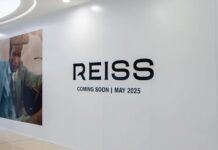When it comes to click & collect, it appears retailers still have a way to go in providing the optimal experience. According to recent research 43 per cent of UK adults who used a click & collect service in the last 12 months experienced an issue, 26 per cent cited long waiting times due to a lack of staff and 18 per cent said staff had been unable to locate Click & Collect items in store.
So, how can retailers manage to deliver a high speed, efficient in store click and collect service with current customer service models? Tom Downes, CEO, Quail Digital, outlines the benefits of a drive thru’ click and collect model.
No Delay
There is less and less tolerance for waiting in line, especially for Generation Z and Millennials. And while at least 72 per cent of customers regularly use the click and collect option from retailers, they have little patience for delay. Asking click and collect customers to join a queue, eventually provide purchase details when they get to the front and then step to one side while the order is being fulfilled is unlikely to deliver the fast, efficient experience now expected.
Instead, retailers could look to a model that delivers the quickest turnaround on order to delivery: fast food. With a 90 second fulfilment process, drive thru’ is a tried and trusted experience familiar to the vast majority of customers; and this same model can be successfully deployed by retailers to achieve a frictionless click and collect service.
With a Quick Response (QR) code within a purchase receipt, a customer can simply drive up and scan the code at the drive thru’ entrance. Immediately, both the retailer’s order taker and warehouse operative will receive a notification via headset that a customer has arrived and see the order number and customer information displayed on a screen. The order taker will respond by confirming the order details and asking the customer to drive to the collection window; while the order picker will find and deliver the item (s) to the collection point. The entire process should take no longer than 90 seconds – exceeding customer expectations.
The key to the quality of experience is the ability to provide an immediate customer interaction. During the time the order is confirmed and the customer is asked to drive to the collection bay, the warehouse operative can locate the items and fulfil the order. There is no delay, no point at which the customer is left waiting. It is seamless, efficient and fast – the quick in-and-out experience without queuing that customers want from click and collect.
Complete In-Store Experience
Of course, not all retailers will want – or be able – to adopt a drive thru’ approach. But a similar in-store model can also be used to provide that immediacy of click and collect. Just as at the drive thru’, the customer scans the QR code on entry to the store via a kiosk, for example, alerting a store associate via headset to immediately search for the item. By the time the customer has arrived at the collection point, the order should have been picked and be ready for collection.

The great thing about this model is that it can support both those customers who want the fast in-and-out and those looking for a more engaging experience. The customers that typically over order on fashion items and want to try on in-store can also pick up their items quickly and then try them on, providing an opportunity for the retailer to offer a personal shopping style service.
Conclusion
There is no doubt that consumer demand for click and collect continues to grow – but expectations are also rising and speed of collection is the number one priority. Whether drive thru’ or in-store, the immediacy of customer data capture and order communication can underpin a click and collect service that meets customer expectations for speed of turnaround.
















